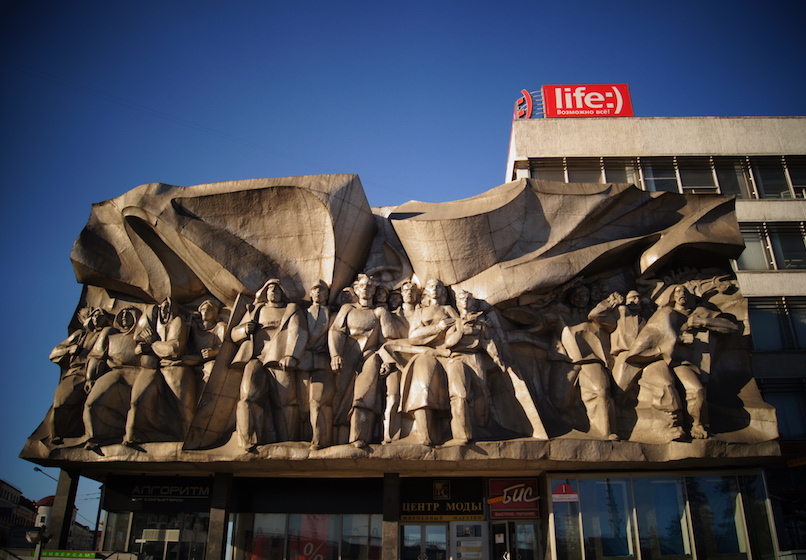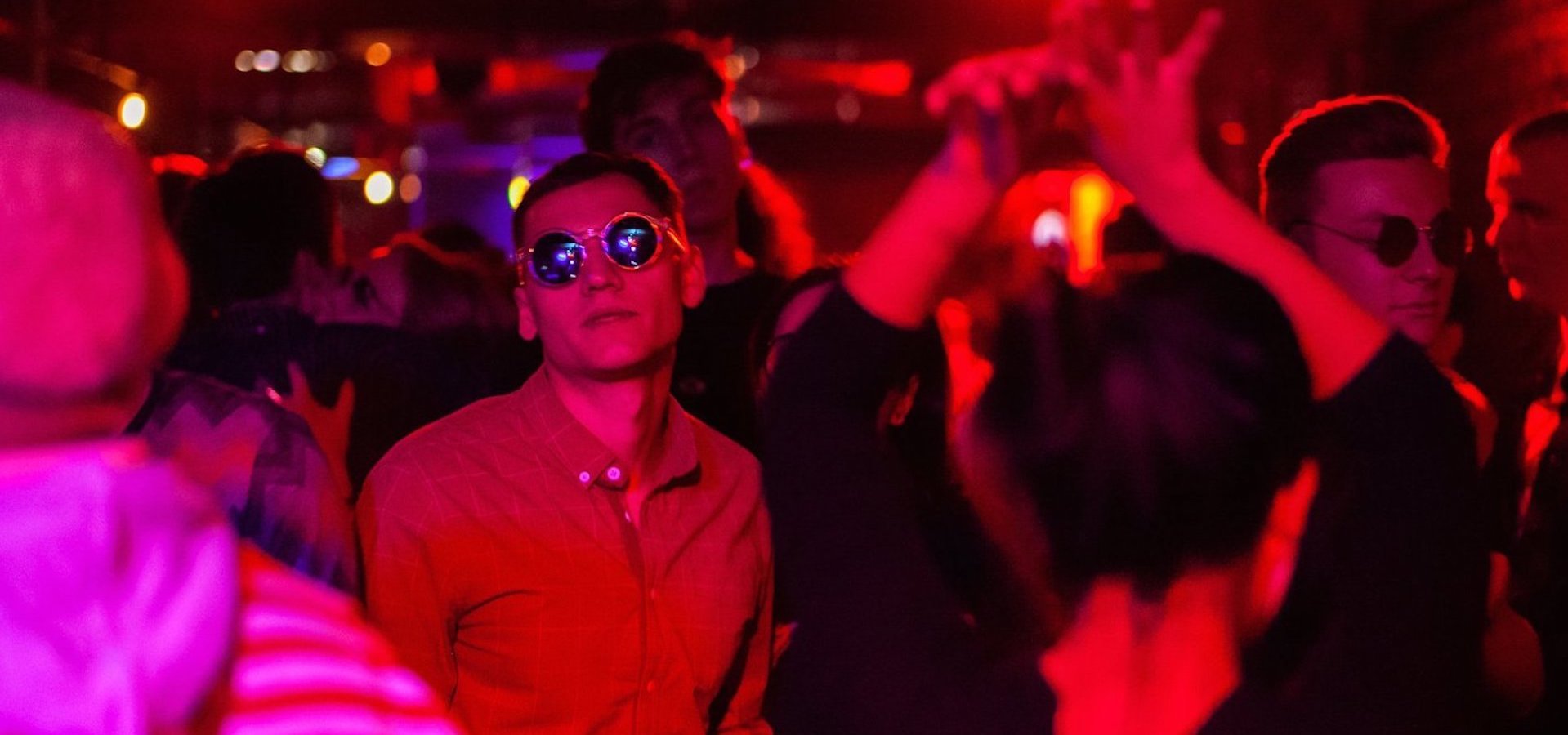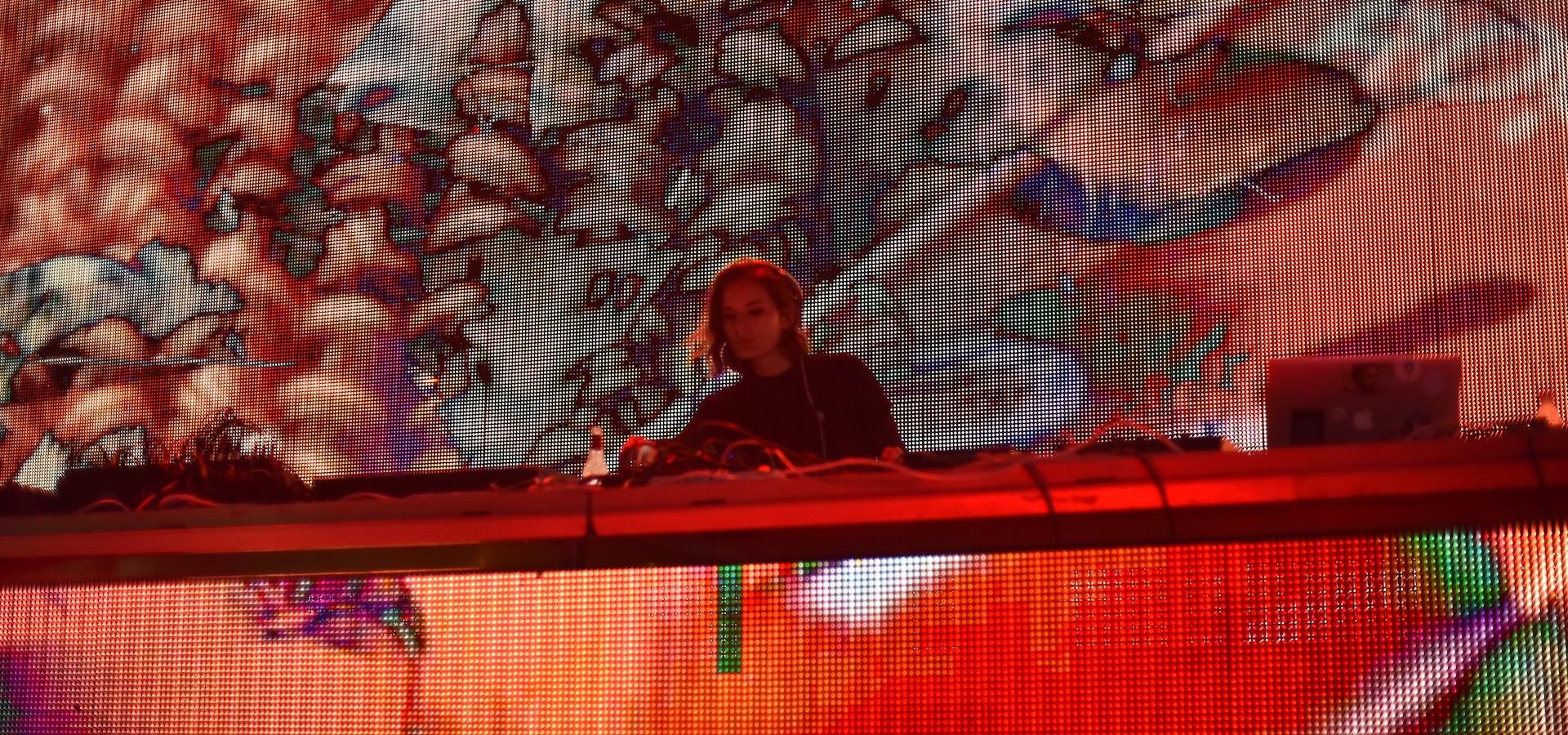Here’s why Belarus should be your next rave destination
Compared with the likes of Kyiv and Tbilisi, Minsk might not have a reputation as an Eastern European party destination, but after several decades of being overlooked, it seems Belarus has finally found its bounce.
There’s always been an existential element to rave culture in Belarus, says Pavel Niakhayeu, better known to the music community as Pavel Ambiont. Niakhayeu is a true advocate for the scene who’s been playing and making electronic music in the former Soviet republic since the late 90s, when musicians were able to take advantage of improved freedoms and access to “Western” culture. “After the Soviet times of ‘fake equality’ and ‘forced equalisation’, the scene became a crucial tool for many people to build their identity, to distance themselves from the old — and the current — state ideology, and stale, conservative culture.”
Since then, Belarusian artists and ravers have seized this opportunity to forge their own culture with both hands. “DJs, artists, promoters, and curators have essentially been working as cultural diplomats for more than 25 years now, helping to integrate Belarus — at least part of its culture and populace — into a European and global context.”
The capital, Minsk, might not be a city that often crops up on the radar of the international electronic music press, far less a clubbing destination with the massive appeal of its neighbours in Russia, Poland, and Ukraine. But do a little digging and you’ll discover a unique and thriving club culture that’s been on the boil for decades, with much of its activity now centred around the buzzing cultural quarter of Kastryčnickaja/Oktyabrskaya (October Street). There are new artists, promoters, venues, and nights popping up all the time, and recently relaxed border regulations, which mean tourists can visit for up to 30 days without a visa, could mean that they’re ready to welcome a new, international audience.
Belarus and its music community aren’t short of anxieties today, and due to a stagnant economy, there’s been an exodus of young talent to countries with more opportunities. While many artists prefer to keep politics at arm’s length, it still seems that clubbing is a vital form of escapism for a lot of young people in Belarus. As Mustelide tells us, it’s about “people dancing like it’s the last time they’ll ever dance in their lives, letting their demons go, finally becoming mad with freedom — that’s a nice image to observe.”
We spoke to some of the scene’s figureheads to find out about the past, present, and future of clubbing in Belarus.
Aslamin
DJ, producer, co-runner of Bassota
As one of the key members of Minsk’s infamous Bassota collective, 26-year-old Alex Aslamin has played an important role in bringing bass music to a city that’s often been ruled by house and techno. In particular, Aslamin’s passion is for bringing the sounds of the Chicago ghetto to Belarus, both producing and playing in his sets a mix of ghettohouse, juke, and footwork. Before Bassota came along, there wasn’t much of an outlet in Minsk for people into scenes like UK garage, jungle, and experimental bass. Those who preferred bass music to techno, Aslamin tells me, were often restricted to making music and DJing in their bedrooms or with friends.
“Basically, this is where our Bassota community came from. The original and everlasting principle of our team is to enable original artists to be heard, which we have been doing for almost five years. Over time, wonderful people — producers, DJs, and enthusiasts who just wanted to change something in this musical space — have joined the community.” Techno might still dominate, but Bassota’s popularity has proven that there’s an appetite in the city for different forms of club music. “The club community has finally formed. These are young, daring guys who are eager to hear something new.”
Pavel Ambiont
Producer, co-founder of Mental Force Festival
Co-founder of Mental Force festival, label boss at Force Carriers, not to mention the first Belarusian electronic artist to perform in the USA and at Boiler Room, Pavel Ambiont/Niakhayeu understands his country’s rave scene better than anyone. “By the end of the 90s, there were electronic music parties in all the major cities: especially in Homel and Viciebsk, but also in Hrodna and Mahilou. At one point Brest, a city near the Polish border, had even better bookings than the capital. Belarus is not just Minsk — many of our best musicians and promoters hail from smaller places all over the country.”
Niakhayeu tells me that there used to be large-scale parties in the forests, with one to two thousand ravers brought in by bus convoys, but that these days, due to increased regulation, events like those are harder to get away with. External investment, too, is hard to come by. “The scene has learned to survive on its own, with minimum input from the outside, in the underground and in a harsh economic situation.”
For Niakhayeu, what’s unique about Belarus’s rave scene is the homegrown talents at its core. “Our scene relies on the ‘local supply’ — our own DJs and musicians. I think the scene’s unique flavour is in the local artists. Our musicians are top-notch and deserve wider publicity.”
Mustelide
Producer, singer/songwriter
Minsk’s “electronic princess” Mustelide is one of the most interesting pop projects to come out of Belarus in the last few years. Natallia Kunitskaya’s innovative use of analogue synthesisers, experimental sampling, and singing in Russian results in a peculiar brand of East-meets-West synthpop that’s earned her popularity throughout Europe. Now living between Minsk and Berlin, Kunitskaya has a unique perspective on the club scene in her home city.
“When I was growing up, the underground scene I knew was mostly in the form of opposition rock in the Belarusian language. When I started five years ago I didn’t really know so many producers in Belarus who made music alone and also sang; these people were also only dudes. I feel like I started the club of female electronic producers here.”
“Belarus is a bit more of a level playing field, it’s a blank canvas where you can start something original and stand out. When events do happen, you’ll go there and meet all your friends, this counter-cultural community which is narrow and set apart from general society.” Berlin might be one of Europe’s clubbing meccas, but for Kunitskaya there’s a charm to be found in Minsk that can’t be replicated anywhere else. “After walking through huge grey Soviet buildings and dodging babushkas left and right, it always feels like you’re in some kind of other dimension. That’s a very special feeling you can’t necessarily get in Berlin.”
HIDE club
HIDE is Oktyabrskaya’s newest venue. Having opened its doors in March, it now hosts some of Minsk’s most exciting events, with shows from Florian Kupfer, Mechta, and Pravda ticked off in May alone. The club emerged from a long history of nationwide event promotion. “For 10 years, we had a promo group called “Refresh” that organised parties and electronic music festivals throughout Belarus,” club owner Sergei Mikhalevich tells me. “Every time, we had to search for a place to transport our light and sound equipment, to make decorations and so on — it was very expensive and very time consuming. That’s why we realised that we needed our own space where we could put on the parties we wanted, and to bring in the artists and DJs we liked. HIDE is the one and only underground club in Belarus which plays house and techno exclusively.”
One of the main changes in Minsk clubbing Mikhalevich has noticed in recent years is the behaviour of the ravers. “Now, a lot of people come to listen to certain artists, not just to dance and drink. All I want to see in the club is high quality music and happy people. I really want to create a special atmosphere in this club that will replenish people, not deplete them. I want people to get inspiration from our parties.”
Aliona Haiduk
Founder of СИЯНИЕ
An artist by profession, Aliona Haiduk started СИЯНИЕ (Shine) just over three years ago, playing synthpop, new wave, and dark wave in a small club with friends. Since then, it’s become a Minsk institution. “It felt like the formation of a new community with likeminded people. With the arrival of Aleksey Budko into the team, the project began to gain momentum quickly and become stronger. Now СИЯНИЕ is based on techno, electro, EBM, and industrial. From the original party, СИЯНИЕ has grown into a fully-fledged rave and is now the largest techno platform in Belarus.”
“The goal of our project has always been the popularisation of local electronic artists — those people who write music, but don’t have a platform to broadcast it to listeners. At the beginning of its existence, the project consisted entirely of performances from Belarusian artists; later, in order to expand our musical horizons and attract a new audience, we began to invite musicians and DJs from abroad. So far, guests from Ukraine, Russia, Lithuania, Poland, Germany, and France have come to us.”
“The main audience is young people from 18 years old, who are just beginning to recognise the night culture of the city, follow trends, and travel to foreign clubs in Europe, Russia, and Ukraine. I like the fact that they are mostly intelligent, creative people who are primarily interested in the music at the parties, and not just hedonism. I hope that this is not a temporary phenomenon, but the beginning of a long journey of electronic music through the veins of Belarus.”








